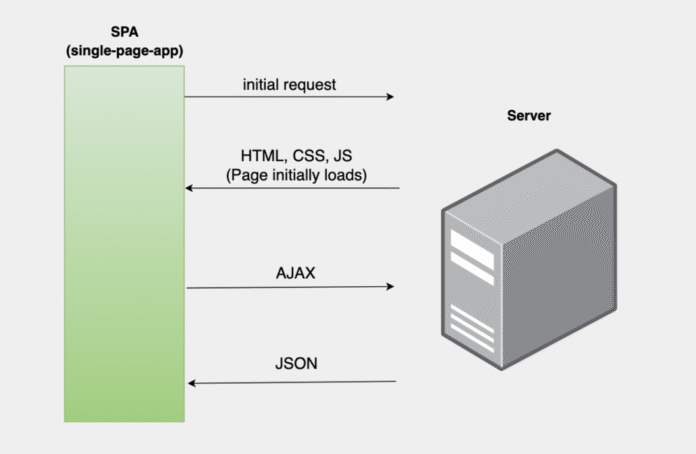In large-scale applications, the synergy of a robust frontend and a high-performance backend is essential. By leveraging Angular for rich, maintainable UIs and Node.js (often with frameworks like Express or NestJS) on the backend, teams can ensure both high throughput and responsive user experiences. Modern SPAs (Single-Page Applications) by default offload much rendering to the browser, which can slow initial load and SEO. Therefore, tech leaders increasingly adopt hybrid rendering strategies – for example, using Angular Universal for server-side rendering (SSR) – to pre-render pages on Node.js servers. This approach boosts Core Web Vitals (e.g. FCP, LCP) by delivering HTML content to the browser immediately. In turn, heavy client-side JavaScript can “hydrate” that HTML into a fully interactive app. Careful choice of rendering model (CSR vs SSR vs SSG vs ISR) is a foundational performance strategy.
A typical Single-Page Application (SPA) rendering flow.

